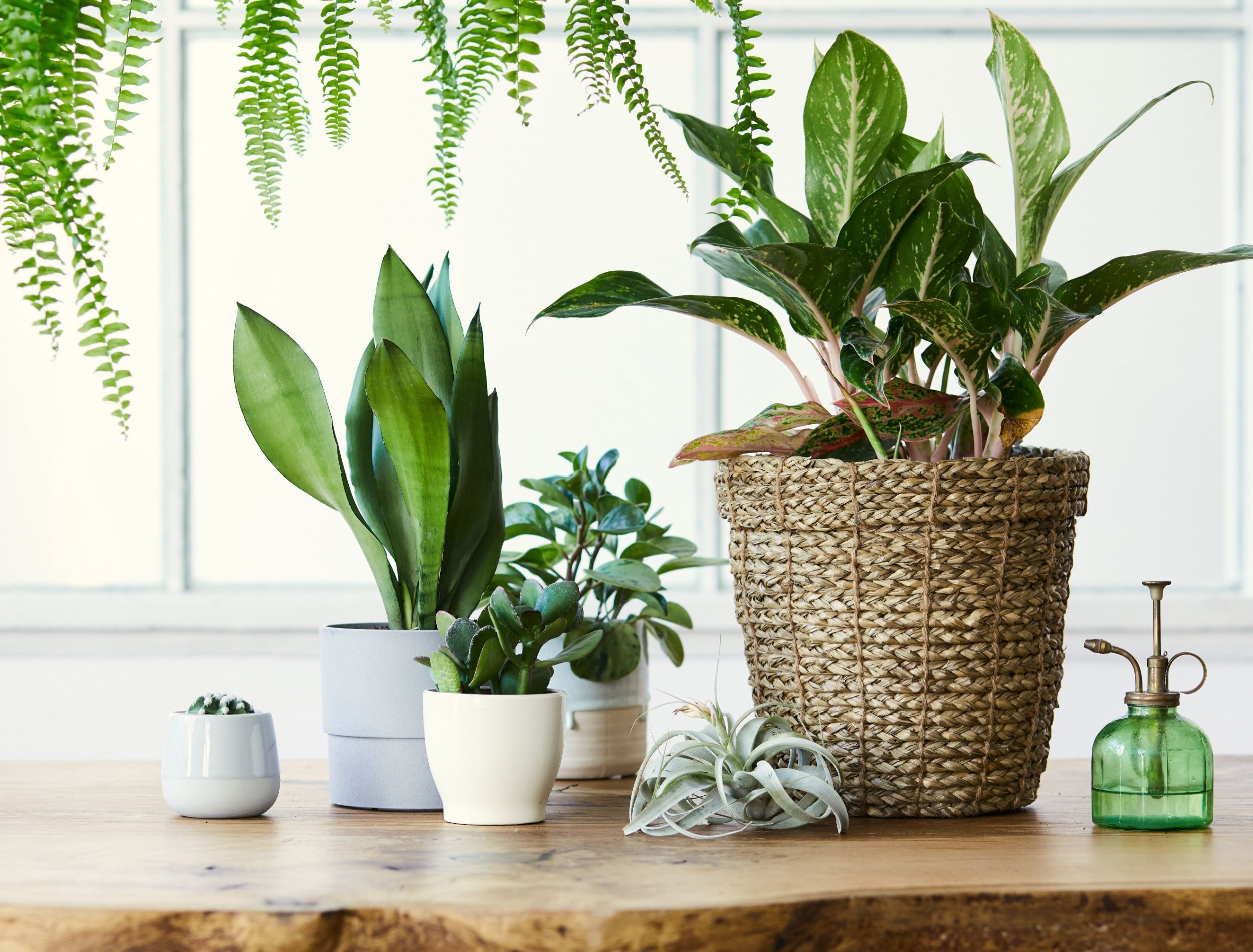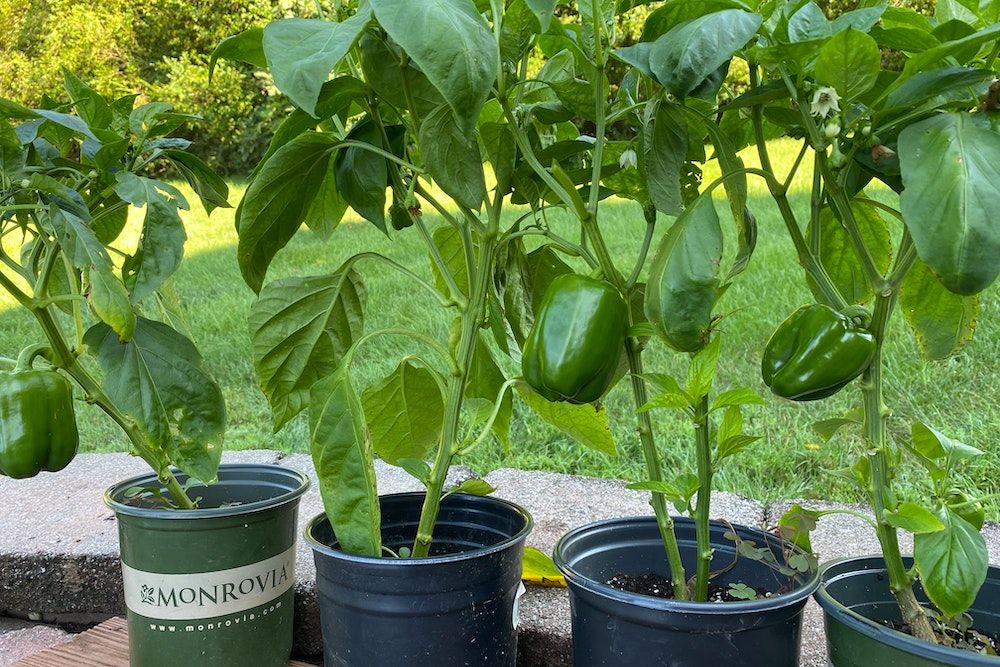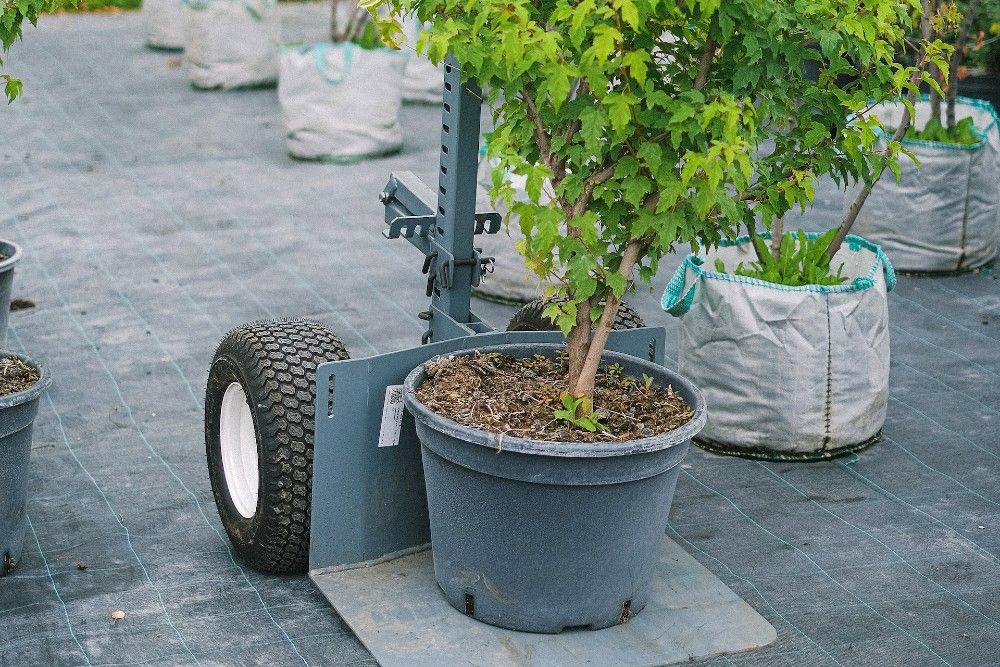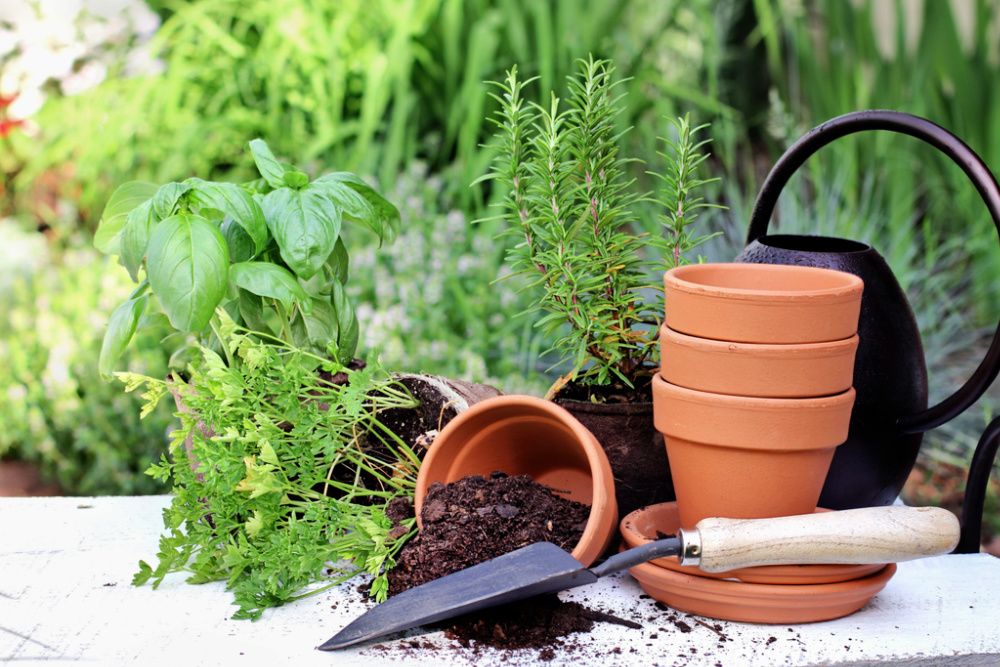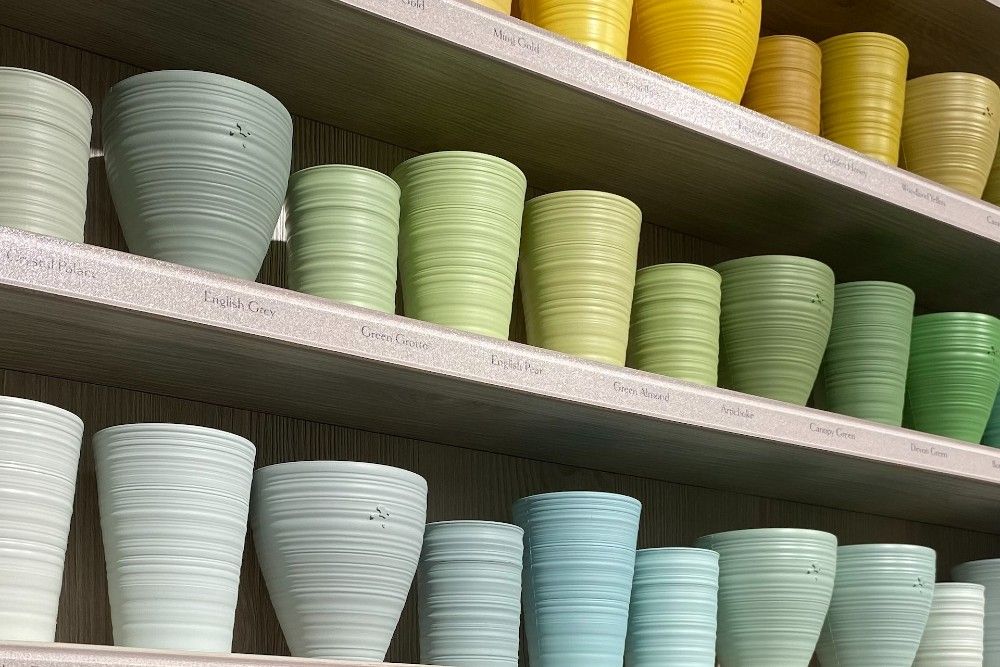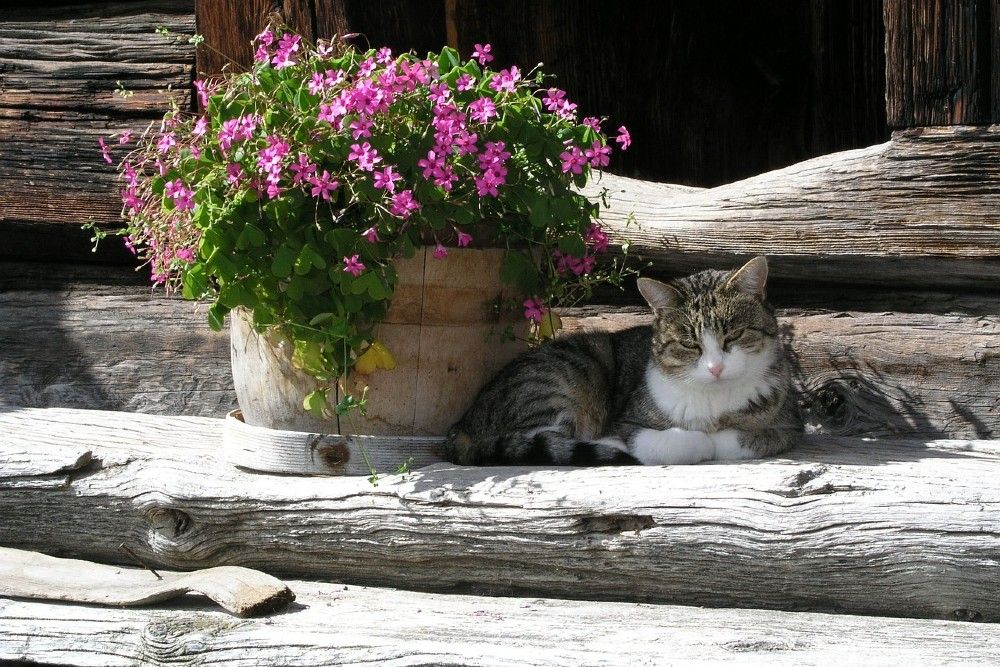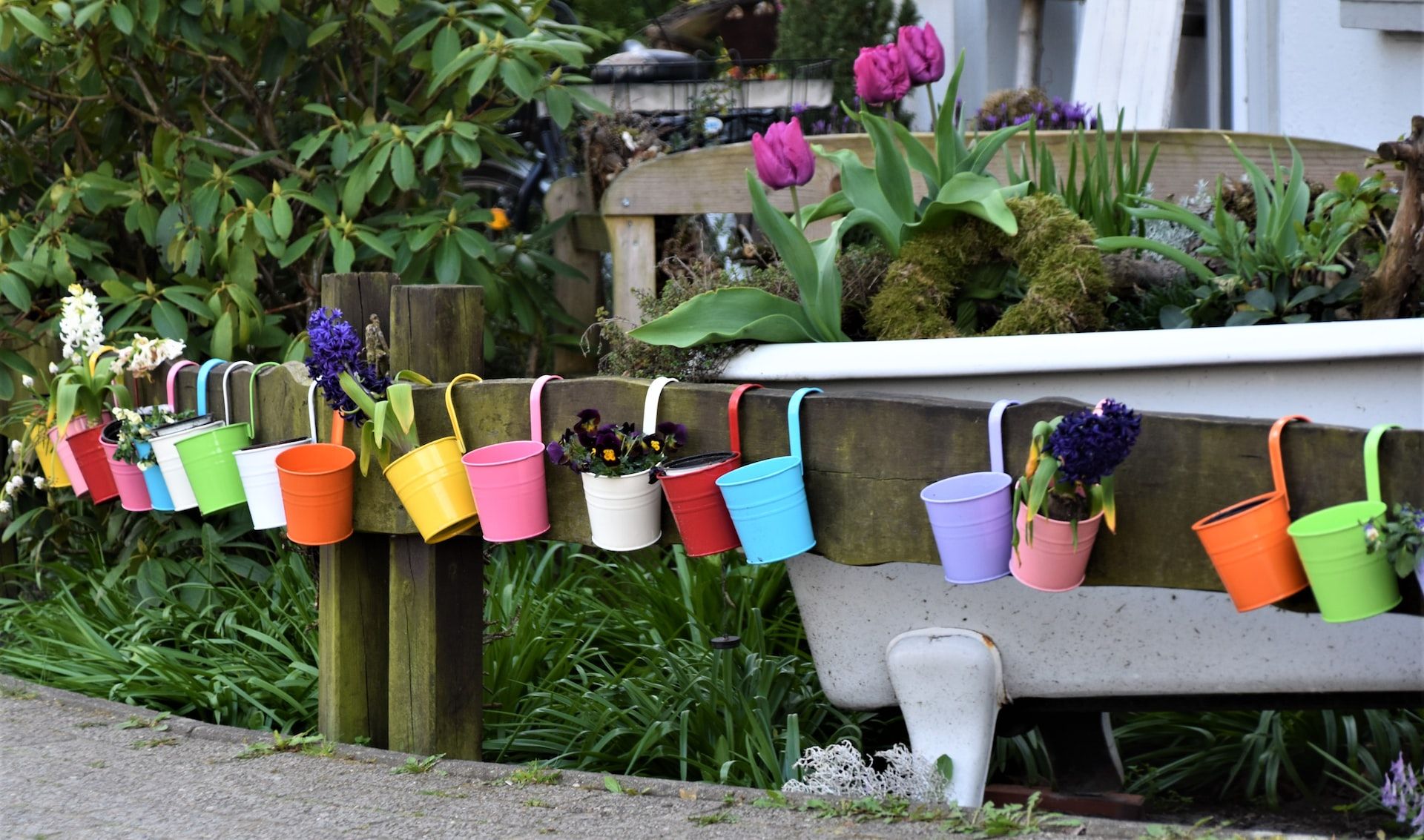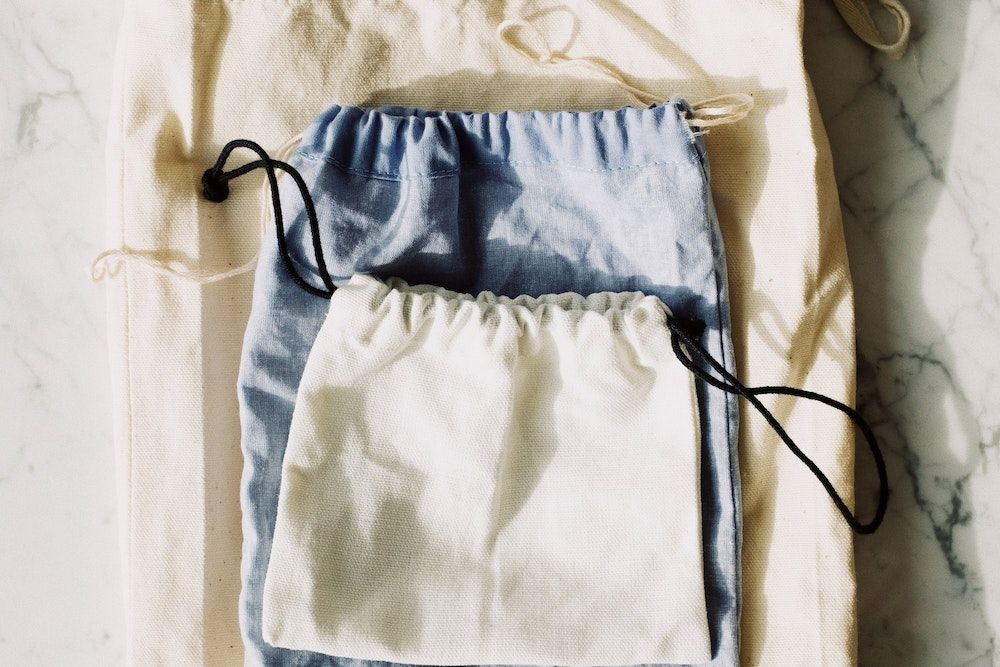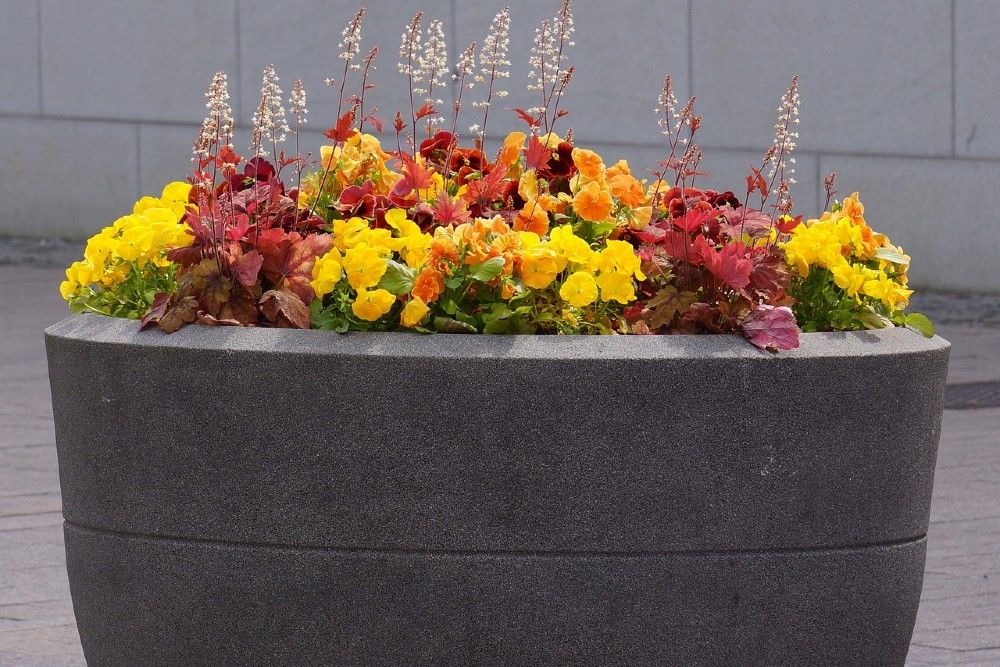Deciding what type of gardening container to use can have a big impact on the health of your plants. While there are endless options to choose from, it’s important to select a garden container compatible with the plants you want to grow. In addition, there are a few tips and tricks in selecting and creating the ideal garden container, and a few container types that you want to steer clear of. Learn about the different types of gardening containers and all the crafty ways you can reuse household items for potting.
Plastic
Image credit: Richa Varshney via Pexels
Plastic is one of the most common types of gardening containers because it’s cheap, easily available, lightweight, and comes in a multitude of sizes and colors. There's also a plethora of plastic household items that you can reuse such as juice and milk jugs, buckets, ice cream containers, and polyethylene plastic bags. However, be sure to use RIC 5 plastics to grow edible crops and stay away from containers previously used to hold toxic chemicals. Also avoid catch-all and Polystyrene plastics.
Plastic pots tend to hold moisture because the material is not porous. Therefore, it's important to make sure there are drainage holes at the bottom -- Tomatoes and peppers do well in plastic pots.
Another benefit to plastic is that it is usually long-lasting. Some harder plastics can crack, and over time plastics do break down, but overall, they are quite durable. Since they are lightweight, they are easy to transport, but can fall over in strong winds. To secure lighter plastic pots, many opt to place them inside decorative, heavier pots, such as terracotta or ceramic.
Fiberglass
Image credit: Anna Shvets via Pexels
From the outside, fiberglass appears similar to plastic, but fiber-enforced plastic makes this lightweight material stronger. The added durability makes fiberglass more weather-resistant and less likely to crack and fade than plastic. While fiberglass is still relatively affordable, it is usually more expensive than regular plastic. Fiberglass also holds moisture similar to plastic, so is good for moisture-loving plants.
Terracotta
Image credits: Stephanie Frey via Shutterstock
Terracotta is another popular gardening container due to its price point, ease of availability, and stunning array of aesthetic design options. It’s also a fantastic choice for arid plants such as cacti and succulents as the clay is moisture-wicking, meaning the soil dries out faster and the material is porous. It’s also a good option for herbs, lettuce, and tulips as the drier environment can help to prevent root rot.
Terracotta may not be the best choice for your moisture-loving tropical plants such as ferns, calla lilies, and alocasias, or if you chronically underwater. These pots are quite a bit heavier than plastic when filled, which is great for stability, but not as good on your back when it comes to moving time.
They are also prone to breaking when dropped or even in cold weather can crack. But, even when they break, you can get creative and reuse them.
Ceramic
Image credit: Ann Zzz via Pexels
Ceramic pots look similar to terracotta but they are usually more decorative and include a glazed interior. This glazing means the soil doesn’t dry out as fast and makes the pots more durable and easier to clean. The added glazing also comes at a cost, and ceramic tends to be set at a higher price point than terracotta.
Pothos, English ivy, and spider plants all thrive in ceramic containers.
Wood
Image credit: Jens via Pixabay
Wood containers add a rustic charm to the backyard garden and are easily customizable to your needs. You can use old wood barrels, and bushel baskets, or re-purpose scraps of wood. When selecting wood, be sure to avoid painted or treated wood, especially when growing edibles because the chemicals can leach into the soil, and in turn, into your food.
Redwood and cedar are excellent choices for wood-type as they are resistant to decay. For other types of wood, or for containers with large cracks/holes, you can line the container with plastic.
Metal
Image credit: Waldemar via Unsplash
Metal is another common container type that is long-lasting. Buying metal containers new can be expensive. However, you can also reuse old metal cans, jugs, or even an old wheelbarrow for a charming aesthetic that’s budget-friendly. Metal is also easy to paint, meaning you can transform your containers into your own unique artwork.
Over time, metal does rust, so ensure there are always drainage holes in your metal containers. Toxic paints and coatings on metal pots can also leach into the soil, so it's best to avoid them, especially when growing edibles.
In addition, in the hot months of the summer, metal containers can heat up and scorch the roots of your plants. You can reduce this risk by placing your metal pots in the shade or covering the pots with shade fabric. Heat-loving plants, such as marigolds, Anise hyssop, and hibiscus are good options.
Fabric
Image credit: ready made via Pexels
Fabric gardening containers are ultra-lightweight, in-expensive, and are an increasing trend. While they aren’t always as aesthetically stunning as the above options, it’s a great way to reuse that pile of reusable bags cluttering your closet. As an added bonus, your gardening container will have handles, making it easy to transport.
You can grow a variety of plants and vegetables in fabric containers, including lettuce, tomatoes, and potatoes. Fabric is an ideal material as it’s breathable, allowing water to drain out of the bottom. However, you can also utilize reusable plastic bags, just be sure to poke holes in the bottom first.
Concrete
Image credit: Merja Partanen via Pixabay
Concrete is a simple and solid choice as a gardening container, able to withstand the wind and colder months. As concrete is heavy to move and breaks easily when dropped, it’s best to leave it in its place once filled with soil. Unfortunately, concrete gardening containers are expensive, and they don’t always have holes which can be problematic for long-term use with most plants. This makes them a good option for outdoor seasonal flowerpot displays.
Pot It Up
Selecting the right gardening container for your plants is crucial for their health, and luckily there are tons of options to choose from. When matching your gardening vessels to your plants, be sure to also consider the depth of the pot. Root vegetables, such as potatoes, carrots, and beets require deeper containers than aboveground crops like lettuce, beans, and tomatoes. In addition, it’s important to disinfect any reused items prior to planting to reduce the chances of disease and pests.
What’s your favorite type of gardening container? Share in the comments!

